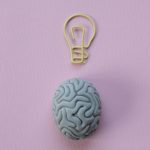High blood pressure (a reading above 120/80mmHg) is a leading cause of heart disease and a major risk factor for stroke, kidney problems and dementia. Consequently, people with high blood pressure (known as hypertension and abbreviated HT) are often advised to start medication as soon as they are diagnosed and they often stay on antihypertensive drugs for life.
A quick primer on BP. The top number is referred to as ‘systolic’ and measures the pressure in our arteries when our heart contracts. The bottom number is referred to as ‘diastolic’ and is the pressure in our arteries between beats when our heart relaxes.
An alarming paper published in the journal eClinicalMedicine in September 2023 estimated that because of incorrect measurement techniques, over 23 million Americans are being diagnosed with hypertension when they do not actually have high blood pressure! This results in needless prescription of medications with unpleasant side effects. The same mistake is likely to be occurring worldwide.
What constitutes ‘incorrect measurement techniques’?
The American Heart Association (AHA) has published the following protocol for obtaining accurate blood pressure (BP) readings:
- The patient needs to sit quietly for at least 3-5 minutes prior to having their blood pressure taken. This means not rushing into the doctor’s room immediately after stressing to find a car parking spot and worrying that you’d be late to your appointment. It also means not getting annoyed that your doctor is running late and keeping you waiting with someone else’s wailing child next to you. Use the time in the waiting room to breathe slowly and deeply while focusing on your breath or visualising a pleasant scene from nature.
- The doctor needs to ensure use of the proper cuff size.
- No clothing under the cuff.
- No talking during BP assessment.
- Sit in a chair with your legs uncrossed and feet flat on the floor. Do not have your BP taken while lying down.
- Sit with your back supported.
- Your arm needs to be supported with the cuff at heart level.
If any of these criteria are not met, you may receive a falsely high BP reading. In addition, your BP will be higher than your usual baseline if you are in pain or in need of emptying your bladder. Therefore, when a nurse or doctor take your BP, please ensure that it is done correctly. Feel free to print out this Health-e-Byte to show them the protocol.
I suggest that you also avoid caffeine (coffee, soft drinks and dark chocolate) for at least 2 hours prior to your visit because caffeine can cause a temporary but significant spike in BP. This doesn’t happen to everyone because caffeine affects individuals differently but it’s worth taking the precaution.
Another cause of false high BP is what’s known as ‘white coat hypertension’. This refers to a person’s blood pressure shooting up simply when they’re in the presence of a healthcare provider. If you think this might be you, ask if you can have ambulatory blood pressure monitoring using a wearable, non-invasive BP monitor over a 24-hour period.
Twenty-four hour BP monitoring will also pick up abnormal blood pressure fluctuations throughout the day. While blood pressure follows a natural daily pattern of rising a few hours before we wake up, peaking at midday and then dropping in the late afternoon and evening, researchers at the University of South Australia have found that brief BP fluctuations over the course of a day (in particular diastolic variability) are linked to poorer cognitive functioning and a higher risk of dementia in older adults. Meanwhile, a rise in BP overnight has been associated with an increased risk of heart disease. Other causes of an irregular BP pattern include obstructive sleep apnoea, kidney disease or thyroid disease. A lot of information can be gleaned from the pressure of our beating heart, hence the importance of measuring it properly.
Unfortunately, most doctors don’t realise that sugar consumption is a far more common cause of hypertension than is salt. Thus, the most effective way to lower blood pressure is to eliminate all added sugars, processed foods and refined carbohydrates from our diet. Dietary measures, physical exercise, adequate good quality sleep (7-9 hours a night) and stress management are more powerful than taking drugs.
Please forward this email to anyone who sees a doctor or who has been diagnosed with high blood pressure.


Thanks for this clear explanation and really practical advice Dr Helena.